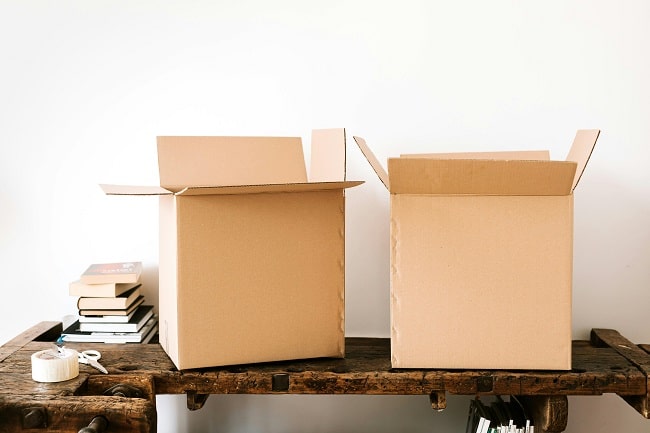When you want to declutter your house, decision fatigue can feel like a major roadblock. Decision fatigue happens when the constant need to make choices wears down your mental energy, leaving you feeling exhausted and unable to decide—even on seemingly simple matters. For many, decluttering becomes a daunting task as each item seems to demand its own decision: keep, toss, or donate? This process can be taxing, but with the right approach, you can conquer decision fatigue and finally achieve a clutter-free, peaceful home.
Understanding Decision Fatigue and Its Impact on Decluttering
Decision fatigue is the mental exhaustion that results from making too many decisions, even minor ones, in a short period of time. Decluttering can amplify this effect, as every item requires a decision, making it easy to feel overwhelmed or discouraged before you even begin.
Decision fatigue is a natural response when facing a mountain of decisions, especially in a cluttered home filled with sentimental and practical items. However, strategies like simplifying choices, setting boundaries, and adopting a systematic approach to decision-making can minimize this fatigue and turn decluttering into an achievable goal.
1. Declutter Your House: Start Small to Overcome Overwhelm
One of the simplest ways to overcome decision fatigue is by breaking down the decluttering process into manageable, bite-sized pieces. Starting with less emotionally-charged items—like expired pantry goods or junk mail—will allow you to make quick decisions without feeling overwhelmed.
Tips for Starting Small
- Choose One Drawer or Shelf: Begin with a single area, such as a drawer or shelf. Conquering a small space can provide an immediate sense of accomplishment.
- Set a Timer: Allocate a set time, like 15-20 minutes, to focus only on decluttering. This prevents burnout and keeps decision-making efficient.
- Group Similar Items Together: When decluttering a small area, try grouping similar items (like pens or coffee mugs) together. This makes it easier to spot duplicates and decide what to keep or discard.
By tackling smaller areas first, you can build momentum, make quick decisions, and gradually develop confidence in your decluttering choices.
2. Set Goals to Declutter Your House Efficiently
Before diving into the decluttering process, clarify your goals for each room or area. Setting specific intentions helps you stay focused, reduces decision fatigue, and enables you to work more efficiently by knowing exactly what you want from the space.
How to Set Decluttering Goals
- Visualize the Ideal Outcome: Think about how you want the room to feel and function. Do you want an organized office, a cozy bedroom, or a simplified kitchen? Imagining the final result makes it easier to decide which items fit this vision.
- Create Criteria for What Stays and What Goes: Having a clear set of rules for what you want to keep—whether it’s based on utility, sentimental value, or style—helps minimize hesitation during the decluttering process.
- Make a Priority List: Identify the areas that need the most attention. Declutter these spaces first to maximize impact and motivation.
Clear goals give purpose to the decluttering process, helping you make decisions more quickly and reduce the mental fatigue of endless choices.
3. Use the One-Touch Rule to Declutter Your House Faster
The “One-Touch” rule can be an effective strategy for reducing decision fatigue. This rule suggests that once you touch an item, you decide its fate immediately instead of setting it down and coming back to it later. This rule encourages decisive action and prevents items from piling up as “maybes” that will require further decisions.
Applying the One-Touch Rule
- Decide Immediately: If you pick up an item, decide whether to keep, donate, or discard it in that moment. Avoid setting it aside for later; instead, let each decision be final.
- Have Bags Ready: Keep separate bags or boxes nearby for donations, recycling, and trash. This way, you can immediately place items in the right category without hesitation.
Using the One-Touch rule promotes confidence in decision-making and helps maintain momentum, so you don’t get bogged down by second-guessing each item.
4. Limit Your Options to Avoid Overthinking
Decision fatigue often arises when there are too many choices, making it difficult to choose. When decluttering, limit your options to only three categories: Keep, Donate/Sell, and Discard. This prevents excessive decision-making and simplifies the decluttering process.
Strategies for Limiting Options
- Create Clear Boundaries for Each Category: For example, “Keep” items should be those that you use frequently or that hold significant sentimental value. “Donate” items are those in good condition but no longer needed, while “Discard” items are broken or unusable.
- Stick to the Basics: Resist the temptation to create additional categories like “Maybe” or “Undecided.” Extra categories only prolong the process and add more decisions.
- Set Quantity Limits: If you’re decluttering something with many duplicates (like clothes or books), set a limit, such as keeping only five T-shirts or three notebooks. This reduces the mental load and encourages quicker decisions.
With only three options, each decision becomes more straightforward, helping you work through your belongings with less effort and faster results.
5. How to Declutter Your House Without Feeling Overwhelmed
Decluttering is mentally and emotionally taxing, so it’s important to schedule breaks. Pausing allows you to recharge and come back with a clear mind, reducing the risk of decision fatigue.
Tips for Effective Decluttering Breaks
- Set a Timer for Breaks: Use a timer to work in 30- or 60-minute intervals, then take a 10- to 15-minute break. This keeps your energy levels steady.
- Refresh with Movement or a Change of Scenery: Step outside, stretch, or take a short walk. Physical movement helps reset your mind and eases tension.
- Stay Hydrated and Nourished: Snacks and water keep your energy levels up and your mind focused.
Breaks prevent burnout, which is essential to staying focused and making good decisions throughout the decluttering process.
6. Practice Letting Go by Embracing the 80/20 Rule
The 80/20 rule, also known as the Pareto Principle, suggests that 20% of the things we own give us 80% of the value or use. By focusing on the essential items that bring the most satisfaction and utility, you can eliminate unnecessary belongings and reduce decision fatigue.
Applying the 80/20 Rule to Decluttering
- Identify the Essentials: Go through each category and identify the items you use or enjoy most. For example, 20% of your kitchen utensils might be responsible for 80% of your cooking needs.
- Let Go of the Rest: Once you identify the most useful items, it’s easier to part with the things you rarely use or don’t need.
- Focus on High-Value Items: Keeping items that bring joy or serve a daily purpose makes decisions easier and more fulfilling.
The 80/20 rule helps you focus on what matters most, making it easier to let go of the clutter and preserve only the essentials.
7. Commit to a Maintenance Routine for Ongoing Clarity
Once you’ve conquered decision fatigue and decluttered your space, the next step is to prevent clutter from creeping back in. A regular maintenance routine keeps decision fatigue at bay by ensuring clutter doesn’t accumulate and decisions stay manageable.
How to Maintain a Clutter-Free Home
- One-In, One-Out Rule: For every new item you bring into the home, let go of an old item. This habit helps maintain a balanced number of belongings.
- Weekly Declutter Check-Ins: Dedicate 15 minutes each week to assess and tidy up areas that tend to collect clutter, like countertops or entryways.
- Quarterly Deep Declutters: Schedule a deeper declutter session every few months to address any buildup and reset your space.
By establishing a simple maintenance routine, you create a sustainable habit that prevents decision fatigue and keeps your home organized long-term.
Conclusion: Decluttering as a Path to Peace and Simplicity
Conquering decision fatigue is the key to finally decluttering your home. By starting small, setting clear goals, and simplifying choices, you can streamline the decision-making process and make it less daunting. Embracing the One-Touch rule, the 80/20 principle, and committing to regular maintenance ensures that your home stays clutter-free, peaceful, and filled only with the things that truly bring joy and value. By taking small steps, you can declutter your house and create a calm, inviting space.
Source: How to Declutter Your Home

